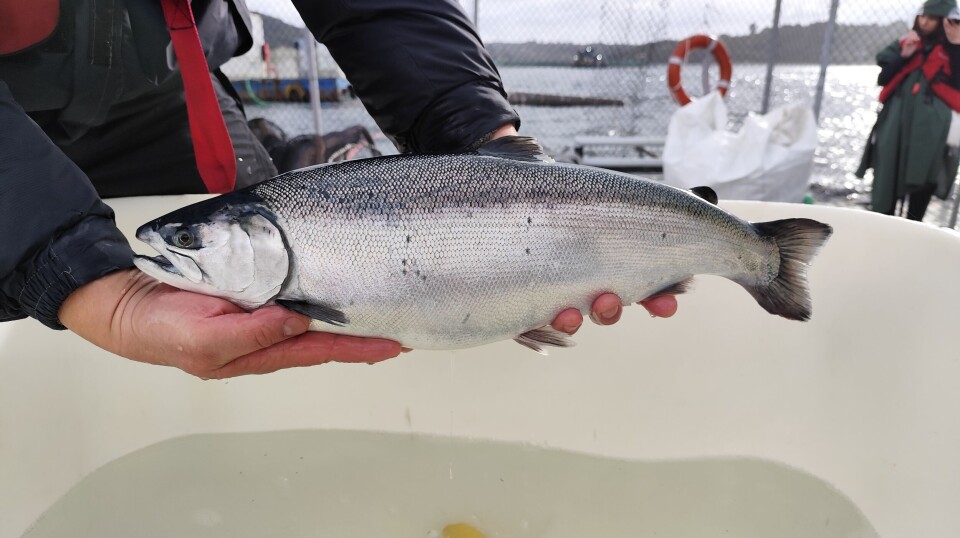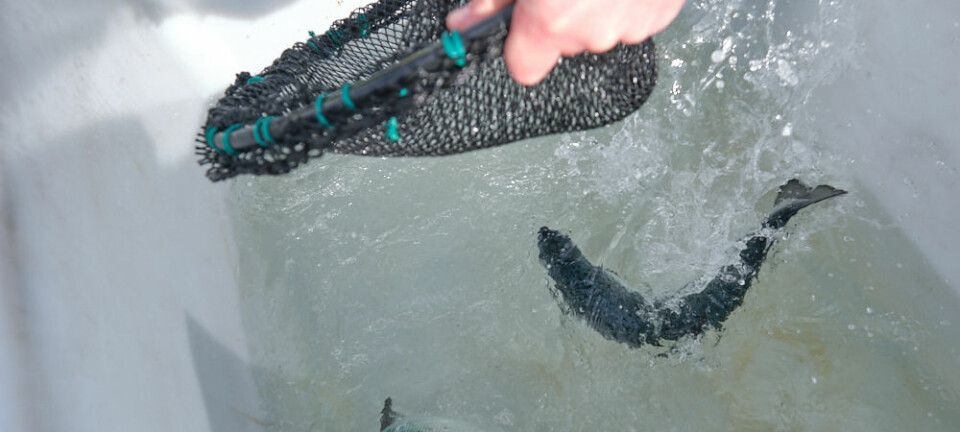
UK and US experts explain potential of gene editing in aquaculture
It 'may only be a matter of time' before knowledge can be deployed practically in Europe and elsewhere, says Chilean organiser of virtual meeting
Experts from the UK and the United States have shared findings on the responsible use of advanced genetic tools to tackle farmed fish health challenges, including sea lice, reports Fish Farming Expert's Chilean sister site, Salmonexpert.cl.
Dr Sarah Salisbury, Professor of Sustainable Aquaculture at the University of Exeter, and Dr Rex Dunham, Professor of Aquaculture Genetics at Alabama’s Auburn University, made presentations during the third virtual meeting of the EDIGEN initiative, promoted by the Faculty of Veterinary and Animal Sciences of the University of Chile.
Dr José Manuel Yáñez, dean of the faculty, said that “although in Europe we know that gene-edited products are not permitted for commercialisation, intensive work is being done on their development. This means that, perhaps in the near future, doors will open to bringing them to market. That’s why we must be prepared.”
In line with this, Yáñez added that “once the technology is activated, there’s no going back. This is a very powerful technique. And it may only be a matter of time before we can deploy all this knowledge in practical applications.”

Salisbury’s presentation, entitled "Single Cell, Many Insights: Uncovering Gene Editing Targets for Sea Lice Resistance with Single Cell RNA Sequencing”, focused on the study of the natural resistance that species of the genus Oncorhynchus, particularly coho salmon, exhibit against sea lice. Using single-cell RNA sequencing, her team has identified candidate genes that could be edited in Atlantic salmon to copy this biological advantage.
“We know that sea lice resistance is highly heritable, but traditional genetic selection has not been effective, so a different approach is required,” Salisbury explained.
Thickening of the skin
According to the researcher, one of the most notable responses of coho salmon to lice is epithelial hyperplasia, a thickening of the skin that can cause the parasite to slough off or even die. This mechanism, absent in Atlantic salmon, is mediated by keratinocytes, key structural cells in the epidermis.
“We identified three layers of keratinocytes, each with specific functions in this defence. They all appear to collaborate in a complementary way in the response against lice,” Salisbury said, indicating that these cells not only participate in tissue regeneration but also activate immune and cell signalling genes that could act as sentinels.
In parallel, sequencing revealed notable differences in gene expression between resistant and susceptible species. For example, coho salmon showed strong overexpression of genes such as GLPR2 and EGFRA in surface keratinocytes, which are linked to motility and inflammation.
Different strategies
Pink salmon, for its part, also activated immune genes - such as NTN1B - in T cells, macrophages, and keratinocytes, suggesting a rapid and unique defence strategy, without the need for visible hyperplasia. In contrast, keta (chum) salmon presented a delayed reaction, and Atlantic salmon showed signs of louse-induced immunomodulation, such as overexpression of the SOCS3 gene in T cells.
One of the most revealing findings, according to Salisbury, was that skin cell types are similar across the species analysed, indicating that “resistant species don’t possess new cells, but rather use the same cells differently”. This observation allows gene editing to focus not on introducing novel cellular structures, but rather on replicating expression patterns that already exist in resistant species. “If we can discover what these functional differences are, we could have excellent candidates for editing in Atlantic salmon,” she explained.
Atlantic salmon 'manipulated'
The Exeter academic also highlighted that the red blood cells of coho and Atlantic salmon respond oppositely to infection. While the former reduces the expression of genes related to iron binding - a strategy known as nutritional immunity - the latter upregulates them, facilitating the parasite’s access to this vital element. This contrast suggests that the louse could be manipulating the physiology of Atlantic salmon for its own benefit.
“Taken together, our data show that coho salmon deploy a coordinated and multifaceted defence, which we could potentially attempt to replicate through gene editing,” the researcher concluded.

Genetic improvement
In the second presentation, “Gene Editing and Engineering for Aquaculture Enhancement: Science, Education, Regulation, Commercialisation”, Auburn University’s Dunham shared decades of experience in genetic improvement applied to species such as catfish, carp, tilapia, and salmon.
Dunham emphasised that gene editing allows for highly precise modification of phenotypic traits and has been used successfully to improve growth, disease resistance, and nutritional composition. “One of our approaches has been to eliminate genes like myostatin or MC4R, resulting in fish that grow up to 70% faster and with higher omega-3 content,” he noted.
Japan and Brazil
The researcher explained that many of these advances have already been translated into commercial products, especially in Japan and Brazil. For example, fish modified to increase carcass yield, or gene-edited tilapia, which are already in the commercialisation phase. He also shared studies where the insertion of antimicrobial genes such as cathelicidin and cecropin quadrupled the resistance of catfish to pathogens such as Edwardsiella ictaluri and Flavobacterium columnare. “A well-targeted gene edit can have positive pleiotropic effects, such as increased growth rate or improved overall health of the fish,” he explained.
Dunham also addressed the need to consider public acceptance and regulatory frameworks. “Despite scientific evidence, fears about gene-edited foods persist. Part of that rejection stems from a lack of public education about genetics.”
In this context, he presented surveys showing that even in developed countries, many people don’t understand that all foods contain genes, and argued that “gene editing poses a lower risk than transgenics and can be controlled much more precisely”.
Genetic sterilisation
Regarding biosecurity, Dunham highlighted advances in genetic sterilisation strategies as a confinement tool. His team has developed fish edited to eliminate key genes from the HPG (hypothalamus-pituitary-gonadal) axis, generating sterility that can be reversed through hormone therapy under controlled conditions.
“This allows us to ensure that the modified fish don’t reproduce outside the production system, which is essential to avoid environmental impacts,” he said, adding that these types of genetic strategies are more robust than physical confinement methods.
Finally, the researcher suggested that the future of aquaculture will depend on the combination of multiple approaches, such as classical breeding, interspecific hybridisation, gene editing, and biotechnology.
“Our goal is to develop superfish that integrate the best of each technique. My prediction is that, eventually, the best fish in all of aquaculture will be those produced with an intelligent combination of advanced genetic programs,” Dunham concluded.
























































